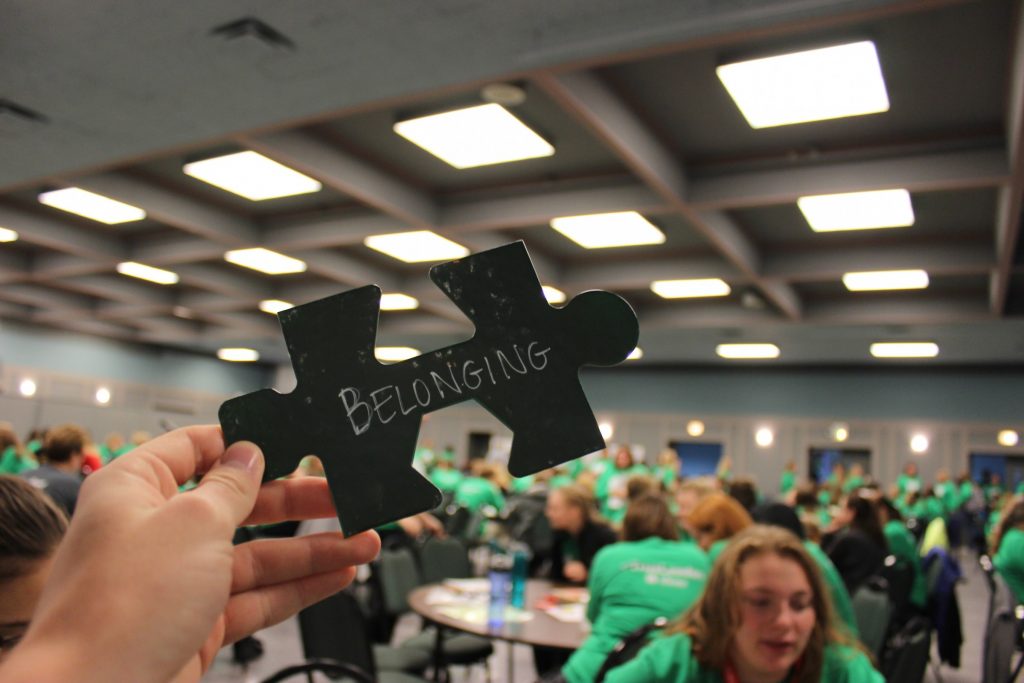
Inclusion is a first step to broadening the membership of a group, but building a sense of belonging invites a deeper level of connection and participation.
Wisconsin 4-H Educational Programs Specialist Amber Rehberg and Dane County 4-H Youth Development Educator Brianna Stapleton-Welch recently presented on the topic. Their audience: nearly 400 youth, adults, staff and volunteers at the early-November Wisconsin 4-H Fall Forum in Green Lake.
Rehberg and Stapleton-Welch introduced the “Four at the Door” principles to encourage a sense of belonging in groups. These suggestions are adapted from the book “Inside Out Coaching: How Sports can Transform Lives” by Joe Ehrmann.
FOUR AT THE DOOR
Eye to Eye: Our eyes are a way of building connections with another person. They reflect our sincerity, integrity and comfort. Be intentional and role model what it looks like to make good eye contact with those around you.
Name to Name: Names are IMPORTANT! One of the number one relationship-building strategies is to ask someone their name, work hard at remembering their name and be willing to ask them how to pronounce it correctly and what their name is if you forget. Use people’s names when you see them or ask them a question.
Hand to Hand: Human beings were built to be relational. BELONGING is all about the relationships we build. Find some form of appropriate human contact and intentionally connect with others. This could be a handshake, a fist bump, high-five or some other form of creative hand-to-hand greeting. (Be respectful of others’ sensory cues. If they don’t seem to want to touch, improvise!)
Heart to Heart: People feel as though they belong when others engage with them in something that they care about. Our youth programs provide many opportunities for us to do well. You could ask about their latest project accomplishments or experiences. You can also ask and be genuinely interested in their other interests.
Fall Forum participants then filled out a personal action plan to use Four at the Door to create a sense of belonging at the conference and back in their counties. They listed action steps, resource, barriers and a deadline to use the strategy. Group discussions of how to interact with others using the Four at the Door principles rounded out the session. Since Fall Forum, youth and adults have reported success in using Four at the Door to develop deeper connections.






